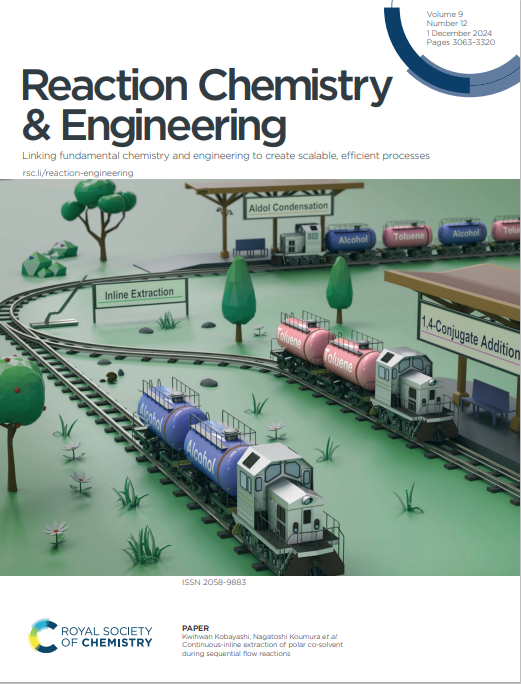连续流中苯乙烯与CO2的电化学羧化反应†
IF 3.1
3区 化学
Q2 CHEMISTRY, MULTIDISCIPLINARY
引用次数: 0
摘要
本研究证明了电化学连续流动电池在苯乙烯β-羟基化反应中的优势。建立了一种高效的连续流法,以极短的停留时间获得高羧酸收率,但仍保持高选择性。本文章由计算机程序翻译,如有差异,请以英文原文为准。

Electrochemical hydrocarboxylation of styrene with CO2 in continuous flow†
This study demonstrates the advantages of an electrochemical continuous flow cell regarding the β-hydrocarboxylation of styrene. An efficient continuous flow method was developed, obtaining high yields of carboxylic acid with a very low residence time, however still maintaining high selectivity.
求助全文
通过发布文献求助,成功后即可免费获取论文全文。
去求助
来源期刊

Reaction Chemistry & Engineering
Chemistry-Chemistry (miscellaneous)
CiteScore
6.60
自引率
7.70%
发文量
227
期刊介绍:
Reaction Chemistry & Engineering is a new journal reporting cutting edge research into all aspects of making molecules for the benefit of fundamental research, applied processes and wider society.
From fundamental, molecular-level chemistry to large scale chemical production, Reaction Chemistry & Engineering brings together communities of chemists and chemical engineers working to ensure the crucial role of reaction chemistry in today’s world.
 求助内容:
求助内容: 应助结果提醒方式:
应助结果提醒方式:


